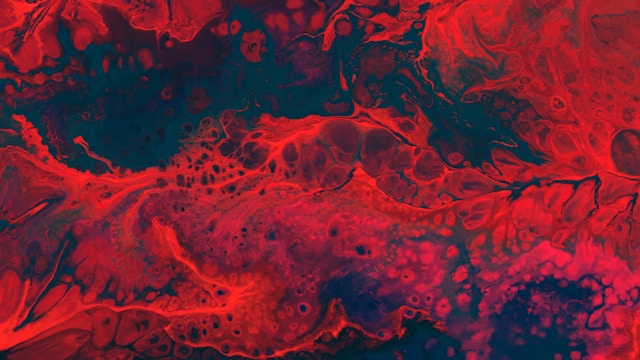Heavy menstrual bleeding is a significant cause of poor health in women, and yet it is rarely discussed openly because of the widespread societal taboo against frank discussion about normal functions of women’s bodies. About 30 percent of women will experience heavy menstrual bleeding at some point in their reproductive lifetime. It can have a substantial effect on a woman’s quality of life including placing limitations on physical activities, social activities, and ability to work during menstruation. Anemia is often a result of heavy menstrual bleeding, and anemia can cause serious fatigue, weakness, dizziness, cognitive problems, depression, anxiety, and more. Although all of these issues have as significant an effect on a women’s quality of life as many other debilitating illnesses, most women probably feel quite isolated in dealing with the problem, because they may feel uncomfortable disclosing it to friends and family members.
What Does Heavy Menstrual Bleeding Mean?
Because of the lack of discussion and education around this topic, many women do not know what may constitute heavy menstrual bleeding versus normal menstrual bleeding. I know that for me, as an adolescent, I assumed it was normal to have to double up on tampons and pads, to need a bathroom every hour or two during my period, to get up several times at night to change tampons and pads, and to always have a change of clothes with me. It wasn’t until I had been seriously anemic for many years that I started to question what I had been told up to that point even by doctors, which was that my heavy periods were normal. We need better menstrual education for teens, so that problems like heavy menstrual bleeding and other women’s health issues can be diagnosed earlier.
The medical definition of heavy menstrual bleeding, also known as menorrhagia, is bleeding that is abnormally heavy (more than 80 mL of blood per period), abnormally prolonged (more than 7 days of bleeding), or both. However, even knowing the medical definition of heavy menstrual bleeding does not necessarily help women identify whether or not their bleeding is normal, because translating that number into what they are experiencing with their menstrual cycle is quite difficult.
Most women probably assume that most or all of the menstrual fluid is blood, but actually on average, only about 36 percent of the fluid is blood. And this percentage varies widely among women, from 1.6 percent to 81 percent. The guideline typically used is that bleeding that soaks through a large pad or tampon in under two hours, going on for several hours, or with large clots, is too heavy. But even among brands of pads and tampons the absorbency can vary from less than 1 mL to almost 100 mL. Because of the difficulty in quantifying bleeding, in many cases doctors will use a woman’s subjective description of her heavy menstrual bleeding as an indication that there is a problem that needs treatment. In some cases this will result in unnecessary treatment for a problem that does not really exist.
Causes of Heavy Menstrual Bleeding
When considering the possible causes of heavy menstrual bleeding, it is important to remember that heavy menstrual bleeding can result from gynecological causes, as well as hematological causes (bleeding disorders). Usually when a woman presents to her doctor with heavy menstrual bleeding, she will be referred to a gynecologist, resulting in an investigation of gynecological causes. However, even when the gynecological investigation does not provide answers as to the cause of the bleeding, hematological causes are not typically investigated. In approximately 50 percent of cases of heavy menstrual bleeding, no cause is found.
Gynecological causes of heavy menstrual bleeding include hormone imbalances, dysfunction of the ovaries, uterine fibroids or polyps, adenomyosis, pelvic inflammatory disease, and in rare cases, cancer. Hematological causes include inherited bleeding disorders such as von Willebrand disease, platelet function disorders, hemophilia A and B, or other clotting factor deficiencies. Bleeding disorders have traditionally been highly under recognized in women, and still are, and some, such as von Willebrand disease, can be hard to diagnose. After gynecological issues are ruled out as a possible cause of heavy menstrual bleeding, it may be important to investigate hematological causes, especially if there are any other bleeding symptoms such as nosebleeds, or abnormal bleeding with dental work or surgeries.
Treatment of Heavy Menstrual Bleeding
Although there are treatments for heavy menstrual bleeding, unfortunately in many cases they are not effective enough. Sixty percent of women referred to a gynecologist for heavy menstrual bleeding will have a hysterectomy within the five years following the referral. Many of these hysterectomies may not be necessary—in some cases gynecological causes are not being treated effectively enough, or bleeding disorders are not being identified.
If a cause can be identified for the bleeding, treating the root cause, in most cases, is preferable. However, there are also treatment options that can address heavy bleeding regardless of the root cause, and the effectiveness and potential side effects of these options varies. There are non-specific treatments such as hormonal contraceptives and non-steroidal anti-inflammatory medications that are often used for a variety of women’s health conditions, and for some women, these can reduce heavy menstrual bleeding as well. There are also two treatments specifically used for heavy menstrual bleeding that can be fairly effective, but each comes with its own risks. Lysteda (tranexamic acid) is an oral medication used as needed during menstruation, and endometrial ablation is a surgical treatment option.
Lysteda/Tranexamic Acid
This medication has been used to prevent and treat blood loss in a variety of situations, such as in trauma cases, surgeries with heavy blood loss, and patients with bleeding disorders. In 2009, it was approved as an oral medication to treat heavy menstrual bleeding. This medication works by slowing the breakdown of blood clots, helping to prevent heavy bleeding, and is used when needed during menstrual periods. It can be used for heavy menstrual bleeding from a variety of different causes, both gynecological, and hematological.
A review of multiple studies of the effectiveness of Lysteda concluded that it can reduce menstrual blood loss by up to 50 percent, and that use of Lysteda results in improved quality of life for patients. No significant side effects were seen observed in these studies. However, since Lysteda affects the blood clotting pathway, there is the potential for increased risk of thromboembolism (obstruction of a blood vessel by a blood clot), although studies to date have not shown any increased risk. This medication should not be used in women with active thromboembolism, or in those with history of or at risk of thromboembolism.
Endometrial Ablation Surgery
Another treatment that is used specifically for heavy menstrual bleeding is endometrial ablation. This is a procedure that surgically destroys the lining of the uterus. The surgery is minimally invasive, requiring no incisions—it is done through the vagina and cervix. In some cases, it can even be done in a doctor’s office, depending upon the method used and the patient characteristics. This treatment is usually used once other less invasive options have failed. However, pregnancy after endometrial ablation can have serious complication, so endometrial ablation is only recommended for women who do not plan to become pregnant.
Endometrial ablation is considered a fairly effective treatment for heavy menstrual bleeding. Depending on the method used, 28 to 71 percent of women will have no menstrual bleeding at all after ablation. Patient satisfaction for all methods is 89 percent or higher. However, about one in six women will require further surgery after endometrial ablation. Hysterectomy is the most common surgery after endometrial ablation, and some women will have a repeat endometrial ablation. Further surgery after ablation is considered a “treatment failure” and can result from continued bleeding, pain, or both. Younger age at the time of the procedure is associated with a higher risk of treatment failure.
Although the procedure itself has been shown to be safe and have a relatively low risk of complications, it is also well recognized that pelvic pain can develop or worsen after endometrial ablation. Longer term complications specifically related to ablation include painful obstructed menstruation, hemometra (retention of blood in the uterus), and post-ablation tubal sterilization syndrome, which is a painful condition that can develop in patients who have had both tubal sterilization and endometrial ablation. About 21 percent of patients have pelvic pain following endometrial ablation. Risk factors for treatment failure with endometrial ablation, in addition to younger age, include painful periods prior to the surgery, endometriosis, adenomyosis, prior tubal ligation, and in some studies, obesity. Endometrial ablation has been used in a wider and wider group of women since its introduction; however, now that risk factors for treatment failure are better understood, women and their doctors can make a better informed decision about whether this procedure would be right for them.
Like many other women’s health issues, heavy menstrual bleeding is a problem that affects many women in significant ways, but is rarely discussed. Many women just put up with it for years or even a lifetime without seeking help. Removing the stigma from discussions about menstrual problems will help many women have a better quality of life and may lead to better treatment options than those currently available.
We Need Your Help
More people than ever are reading Hormones Matter, a testament to the need for independent voices in health and medicine. We are not funded and accept limited advertising. Unlike many health sites, we don’t force you to purchase a subscription. We believe health information should be open to all. If you read Hormones Matter, like it, please help support it. Contribute now.
Yes, I would like to support Hormones Matter.
Photo by Cassi Josh on Unsplash.
This post was published originally on Hormones Matter on November 23, 2015.














Six months no period. Last one June 2016 Hot flushes everyday Now periods back heavy. No hot flushes Distended stomach clotting
58 years of age
What is the answer
Please answer. Help
Hello. Happy new year. Wondered if you could offer advice.
After being clear of no periods since the 7 July, my body decided to start one New Year’s Eve. I am 58. I started getting lots of hot flushes now they’ve gone. An ultra scan confirmed adynymosis in June last year. What do suggest is the best route. I was scheduled for a hysterectomy but because I was going through menopause it was canceled. My smear test was clear in July too Thank you
Hello. Happy New year
Wondered if you could reply to my difficulties
I have adynymosis , my periods stopped July 2016 I am 57. Yesterday I had some bleeding again. Just for a day ! Hot flushes have stopped. Is this a normal process ? I’ve also just had flu
3 post
Still have bleeding problems taking iron but bleeding heaviier managing to work just with frequent visits to the washroom. I hope it stops soon it drains you.
I have finally got menopause , Hot flushes at 57.
I hope this condition shrinks. But I am suffering with digestive problems. , cramps constipation , sleepless nights or disturbed. Nights always wake up wanting the washroom. Trying to drink lots and change diet. Is there anything I should be doing doc ? Relief not to have bleeding but a bit worried by a few other things thank you
Hello. I am presently 57 and have now been diagnosed with This disorder. I am waiting for a hysterectomy in December. Unfortunately menopause is not coming. I had an ablation four years ago for a fibroid But it hasent worked and now j bleed all the time. I am worried that I may pass out and spend tge time I’m not working I bed. I have no bleeding the suddenly it drops , huge clots , and at least four visits to the bathroom before it stops. The drugs do help to stop but cause right sided pain so bad on a scale of 1-10. It’s 15. I have phoned yesterday to the gynaecologist for an early hysterectomy. Obviously I feel work will be on the line , poss no job once they know. Do you know can I claim dissability if this happens ie Canada and wait to dec and hope menopause kicks in or do I go for hysterectomy now and hope work is patient about it ??
Hi Sara, I don’t know if it is possible to claim disability for that. What medications are you using for the bleeding?
I have been battling this for 3 months. Not long compared to many women I’ve read posts and articles from. During this time I have bleed almost everyday. I was recently in the ER after 24 hours of severe bleeding. I was anemic and in need of a transfusion. The most frustrating part of all this is not having an answer or real solution. I was given liquid estrogen and told to take 2 bc pills until the bleeding stopped, then skip the last week and continue on to a new pack. Well 7 days later still bleeding, not surprising. I feel I shouldn’t complain I’ve always had easy periods minimal cramps and short bleeding. 2 years ago I began having severe breast pains and bigger clots. Im only 35 now, but they did a mammogram, normal. Then about 6 months ago they became a bit irregular. Now it seems I will never stop bleeding. I’m so weak and since the er I’ve had severe cramps! I feel so hopeless and am just praying for a light something! Besides a cyst that burst, every test shows nothing is wrong. The cyst should not be causing such excessive bleeding, I’m told. So what, I just started evening primrose, milk thistle and iron. I’m healthy active a vegetarian well I eat fish and a lot of legumes. I haven’t changed anything to warrant this severe change in my health. Im not a fan of pills, i never even take asprin for a headache. I believe in essential oils and natural remedies, but at this point ill try anything. I need to be able to work, i own my craft business. Any suggestions would be gratefully accepted!
Hi Jessica, I’m sorry to hear you are having such a hard time. It is really difficult to bleed excessively like that. Have you been consulting a naturopath, or did you start the supplements on your own? I would ask a naturopath about Vitex (chasteberry)–it is very often used for female reproductive system problems. it helped me regulate my cycles. It is a strong herb though so you would definitely want to get advice from a medical professional before starting it. I am also not sure whether you can use it at the same time as the birth control pill.
For me personally, I always had more difficulty with my bleeding when I was on the pill. Everything they suggested never worked–different brands of pill, double doses, etc. I know that doctors often suggest the pill as a treatment for heavy bleeding, irregular bleeding, but for some women it just does not work. Also, with taking a double dose you do increase your risk for serious side effects like a blood clot. You may want to consider trying to be off the pill for a while and see if your bleeding problems improve. There are non-hormonal methods you can use for contraception.
I hope you start to feel better soon.